

Hilding Lundh immigrated to America in 1926 at the age of 19. When it was time to leave his mother Hilda could not stand saying goodbye to him so she went out to the barn instead. She then stood there, looking at him as he slowly walked down the road. He turned around and waved at his mother who was crying.
She never saw Hilding again. His brother Gunnar went to America two years after. The brothers met up in Chicago and worked side by side for many years.
Gunnar talked about hard times; you were happy if you found a vacant job so that you could at least pay the rent and buy some food.
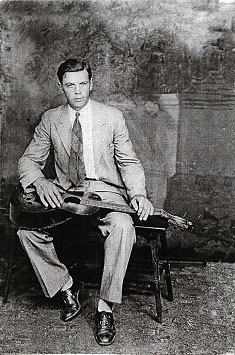
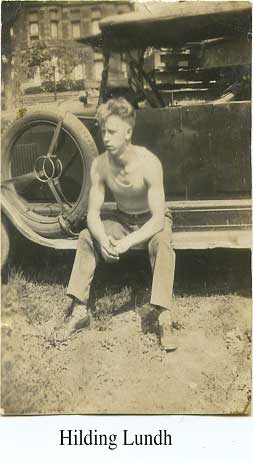
Gunnar Lund
Hilding Lundh was later employed at the Canadian riding police unit. His horse was one day being found running round without a rider, with blood on him. They searched for Hilding and found him shot but alive. He was taken to the nearest hospital but passed away shortly after. He is buried at Nut Lake Cemetery in Canada. Hilding died in 1935 and Gunnar Lundh returned to Sweden in 1936.
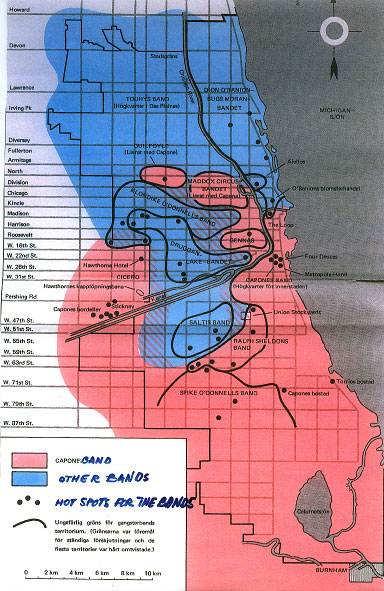
Chicago – “The city of the Godfather”
Chicago was at that time controlled by competing bands of gangsters. The bigger part of Chicago was controlled by the Capone-syndicate and the remaining part by “independent bands” where Bugs Moran was one of the leaders.
There was a prohibition of the sale of liquor and enormous amounts of liquor was produced and sold in secret. It was also common to smuggle liquor from Canada into the drained Chicago. At February 13, an agent called Bugs Moran and told him that he had a truck on the other side of the river, “for 57 dollars a carton”. Moran said yes to the offer and told the agent to transport the liquor to a garage at North Clark Street at 10:30 o’clock the following day. It happened to be St. Valentines Day.
St. Valentines Day, February 14, 1929
No. 2122 Clark Street was a small building squeezed in between two taller buildings, with the text “S. M. C. Cartage Company” in the façade. People in the neighbourhood had never have reasons to believe that it was anything different than the mover company it claimed to be. It had a port to the garage in an alley behind the house and it was this very well hidden port that Moran’s liquor trucks used as they rolled into the bands central liquor storage – the garage.
Suddenly, a black Packard turned up with the side curtains covering the windows. It looked just like the type of car that the criminal police used. It drove into the pavement and stopped two buildings north of the garage. Five men stepped out; three in police uniforms and two dressed in civilian clothing. They went through the front door at 10:50 am. Shortly after, the neighbours heard a lengthy noise followed by two muffled bangs. They figured that a truck in the garage had backfired but were interested enough to take a look outside the window. They saw the five men come out from the building – but this time, the two civilians walked out first with their hands above their heads and after them came the polices with their weapons pointing towards the two men.
They all got into the car and drove away. The neighbours assumed that it was a question of a police raid. One of the neighbours, Mrs. Landesman, got curious and went down to the garage, but she could not open the door so she called on
Mr. C. L. McAllister who pushed the door opens with his shoulder. He walked the corridor down to the garage. Mrs. Landesman later said: “Mr. McAllister came running out and said that the garage was full of dead men. That is when I called the police.” There were six dead and one dying man inside the garage. They were lying among tyres and tarpaulins. Five of the dead were members of Moran’s band. No one had touched their diamante rings, their bundles of notes or their weapons. The sixth victim, a dandily dressed person with a carnation in the buttonhole, was identified as Doctor Reinhart Schwimmer – an eye doctor with big admiration for Bugs Moran.
The autopsy showed that the men had been shot with hundreds of bullets.
Gunnar Lundh told that the owner of the garage arranged a guided tour in the garage the following days. For 25 cents you could come in and look at the blood and the bullet holes in the wall. You can assume that he made good money at this.
Despite his extensive activity, Capone could never be charged for anything other than tax evasion; a federal court convicted him ten years in prison for this crime. He started to serve his sentence in Atlanta but where later on transported to Alcatraz. Once he was released, he was a mentally broken man.
Extract from Kenneth Allsop’s book
“The Gangster empires of Chicago”
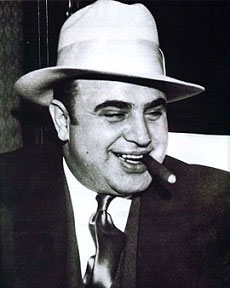


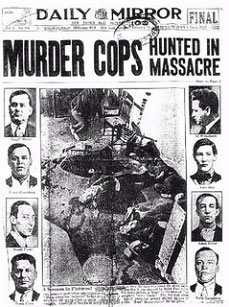
Översättning Maria Svenberg, Emigranternas Hus.